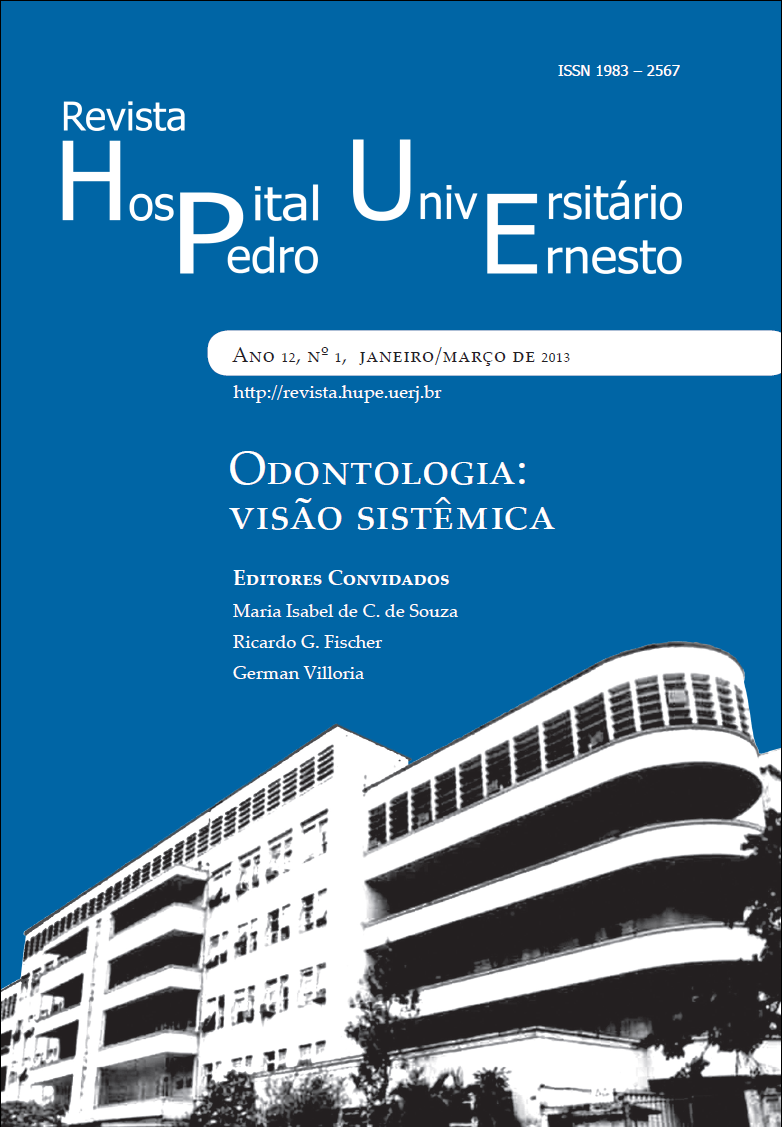Antissépticos bucais no controle da bacteremia de origem oral
DOI:
https://doi.org/10.12957/rhupe.2013.8807Resumo
O conhecimento científico atual nos oferececlaras evidências da influência de procedimentosque manipulem os tecidos orais no desenvolvimento de bacteriemia e consequentemente no risco de endocardite infecciosa. Ao surgir indícios de que a doença periodontal pode ser um fator de risco significativo para o desenvolvimento de algumas doenças sistêmicas assim como a doença cardiovascular, verificou-se que essas certas condições sistêmicas podem ser iniciadas pela entrada repetida de bactérias na corrente sanguínea. A utilização de antibióticos sistêmicos é o método tradicionalmente recomendado para o controle de bacteriemia de origem oral, entretanto, discute-se a sua total eficácia e, em se tratando de segurança, o seu uso acarreta efeitos colaterais indesejáveis. Está bem estabelecido na literatura, o impacto significativo do controle mecânico e químico sobre os níveis de microrganismos placa supragengival e no consequente controle da inflamação gengival. Com base nessas propriedades bem documentadas sobre a terapia periodontal, alguns autores recomendam a utilização de métodos adjuntos como a aplicação tópica de antimicrobianos na margem gengival, com o objetivo de diminuiro número de microrganismos viáveis que penetrem na corrente sanguínea. Como alguns estudos recentes sugerem que o antibiótico sistêmico não previne a endocardite infecciosa proveniente de manipulação bucal em todosos casos, a adição de um medicamento tópico oral com o intuito de diminuir o número de microrganismos viáveis na corrente sanguínea pode ser um método adjunto importante. O objetivo deste estudo consistiu em fazer um levantamento dos trabalhos publicados sobre a bacteriemia de origem oral e sua prevenção através da utilização de antissépticos bucais.Downloads
Edição
Seção
Artigos


